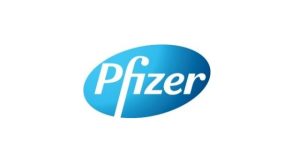COVID-19 Finally End: Pfizer Reports $2.3 Billion Loss in Q3
- A Single US$2.15-Million Injection to Block 90% of Cancer Cell Formation
- WIV: Prevention of New Disease X and Investigation of the Origin of COVID-19
- Why Botulinum Toxin Reigns as One of the Deadliest Poisons?
- FDA Approves Pfizer’s One-Time Gene Therapy for Hemophilia B: $3.5 Million per Dose
- Aspirin: Study Finds Greater Benefits for These Colorectal Cancer Patients
- Cancer Can Occur Without Genetic Mutations?
COVID-19 Finally End: Pfizer Reports $2.3 Billion Loss in Q3
- Red Yeast Rice Scare Grips Japan: Over 114 Hospitalized and 5 Deaths
- Long COVID Brain Fog: Blood-Brain Barrier Damage and Persistent Inflammation
- FDA has mandated a top-level black box warning for all marketed CAR-T therapies
- Can people with high blood pressure eat peanuts?
- What is the difference between dopamine and dobutamine?
- How long can the patient live after heart stent surgery?
COVID-19 Finally End: Pfizer Reports $2.3 Billion Loss in Q3
Pfizer Reports $2.3 Billion Loss in Q3: The End of the COVID-19 Drug Saga, Next Up: Weight Loss Medication.
On October 31, multinational pharmaceutical company Pfizer released its third-quarter financial report.
Due to significant inventory write-downs related to COVID-19 vaccines and drugs, the company not only experienced an unusual quarterly loss but also failed to meet market expectations in terms of revenue.
In total, Pfizer generated $13.23 billion in revenue in the third quarter, a 42% decrease compared to the same period last year when it earned $22.6 billion.
The company incurred a loss of $2.382 billion, contrasting with the $8.6 billion profit it made in the same period last year.

The most significant impact on performance came from products related to COVID-19. COVID-19 vaccines generated $1.31 billion in sales in the third quarter, a 70% decrease compared to the previous year. Even more distressing was the performance of the COVID-19 drug Paxlovid, which only generated $202 million in revenue in the third quarter, a 97% decrease year-on-year. These two products contributed a total of $12 billion in revenue to Pfizer in the third quarter of the previous year.
Of course, the loss this quarter is also related to the COVID-19 drugs. In a performance warning issued in mid-October, Pfizer mentioned that the U.S. government would be returning around 9.7 million courses of Paxlovid with the “emergency use authorization” label by the end of 2023. This situation will result in a $4.2 billion non-cash income reversal and an additional $5.6 billion non-cash expense, which is reflected in the third-quarter report as inventory write-downs and other items.

After the latest adjustments, Pfizer’s full-year revenue guidance has dropped from an initial range of $67-71 billion to $58-61 billion, and the net profit is expected to decrease by approximately 70-80% year-on-year. When announcing the financial report on Tuesday, Pfizer also reaffirmed this performance guidance.
To address the decline in performance, Pfizer has introduced a cost reduction plan of $3.5 billion, and recent reports of Pfizer layoffs are related to this plan.
How Did Non-COVID-Related Businesses Perform?
Pfizer disclosed that, aside from the disruptions caused by COVID-19-related products, other segments of the business showed a 10% year-on-year growth.
The fastest-growing segment was the recently launched RSV vaccine, Abrysvo, which generated $375 million in sales in the third quarter. Additionally, the acquisition of the migraine medication Nurtec ODT and the sickle cell disease drug Oxbryta brought in $233 million and $85 million in revenue, respectively.
Pfizer’s rare disease innovative drug Vyndaqel saw nearly a 50% increase in revenue this quarter, and a set of drugs for treating Streptococcus pneumoniae infections generated $1.85 billion in revenue, with a growth rate of approximately 15%.
Notably, the anticoagulant Eliquis, listed in the “U.S. Federal Medicaid Negotiation Catalog,” generated $1.49 billion in revenue, a 2% year-on-year increase. This drug is jointly marketed by Pfizer and Bristol-Myers Squibb.
For the capital market, Pfizer’s next potential breakthrough is the GLP-1 drug danuglipron, currently undergoing clinical trials. If this drug proves effective, Pfizer will be eligible to compete in the billion-dollar market alongside Novo Nordisk and Eli Lilly. Coincidentally, the leading weight loss medication, Novo Nordisk, has seen nearly a 40% increase in its stock price since the beginning of the year, while Pfizer has experienced almost a 40% decrease.

(Daily chart of Novo Nordisk and Pfizer, source: TradingView)
Additionally, Pfizer’s $42 billion acquisition of cancer therapy developer Seagen is awaiting antitrust approval. The company had previously expected this deal to bring in an additional $10 billion in risk-adjusted revenue by 2030.
COVID-19 Finally End: Pfizer Reports $2.3 Billion Loss in Q3
(source:internet, reference only)
Disclaimer of medicaltrend.org
Important Note: The information provided is for informational purposes only and should not be considered as medical advice.



